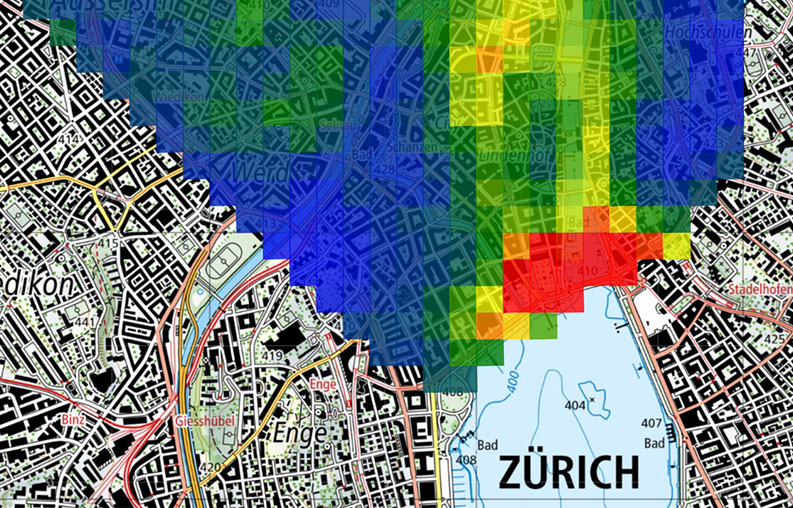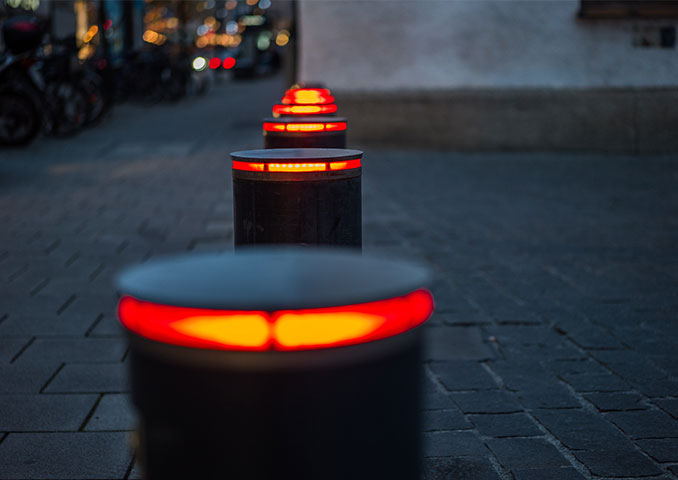People density prediction
Risk management in high-density urban areas.
Your job is to protect the public. We use mobility data to identify large gatherings of people in small geographic areas, allowing you to create data-driven safety measures.


For civil protection, events and drone operators
Using mobile phone data and other parameters, we calculate the number of people to be expected in a particular place at a particular time. This makes it possible to prepare security measures and plan operations and events in advance. Drone operators use the information to perform drone flight risk analyses.
A beta version of Swisscom Broadcast’s People Density Prediction Service is now available.





People Density Prediction
Data-driven prediction
The algorithm combines Swisscom mobile data with weather forecasts
People density measurement
Calculation of people density in populated areas
Current data
View daily reports in hourly increments at the touch of a button
Crowd Management
Relevant events can be integrated into the algorithm independently
Why Swisscom Broadcast
Register now for a no-obligation demo
Which data do the services use?
We use aggregated mobility data from the mobile network. This provides anonymised information about the mobility behaviour of the population.
What is the legal basis for the services?
The legal basis for these services and associated data processing is Art. 45b of the Swiss Telecommunications Act (TCA). Under this regulation, telecommunications service providers may process anonymous location data of their customers or, with their consent, may also process location data for services outside of the provision and billing of telecommunications services.
What data must be processed for the services to provide the information requested by the customer?
The services use data that is generated when Swisscom customers use a mobile device: the IMSI number of the SIM card, the date and time the SIM card interacted with the mobile network and the identifier of the mobile communication mast with which the SIM card interacted.
Is it possible for the reports provided on the services to be used to identify or perhaps monitor the holders of SIM cards?
No, this is not possible. The reports provided by the services are an approximation, rather than a precise reflection of reality. Swisscom can only determine the position of a SIM card approximately for technical reasons. The median position of a SIM card determined by Swisscom differs from the actual position by around 130 metres. The median represents the radius. In reality, therefore, the position of a SIM card determined by Swisscom is somewhere within a circle of 260 metres’ diameter and an area of around 53,000 m2. As a result of these discrepancies, the position determined by Swisscom may appear in a different quadrant than the one in which the SIM card was actually located. Identification of a SIM card holder is technically not possible under these circumstances, especially given the fact that the reports represent historical information and a k-anonymity of 20 is guaranteed by default.
Is it possible to opt out of location data reporting for your own SIM card?
Yes. The holder of a SIM card can opt out of location or mobility data reporting via the online Customer Center or the Swisscom hotline.
